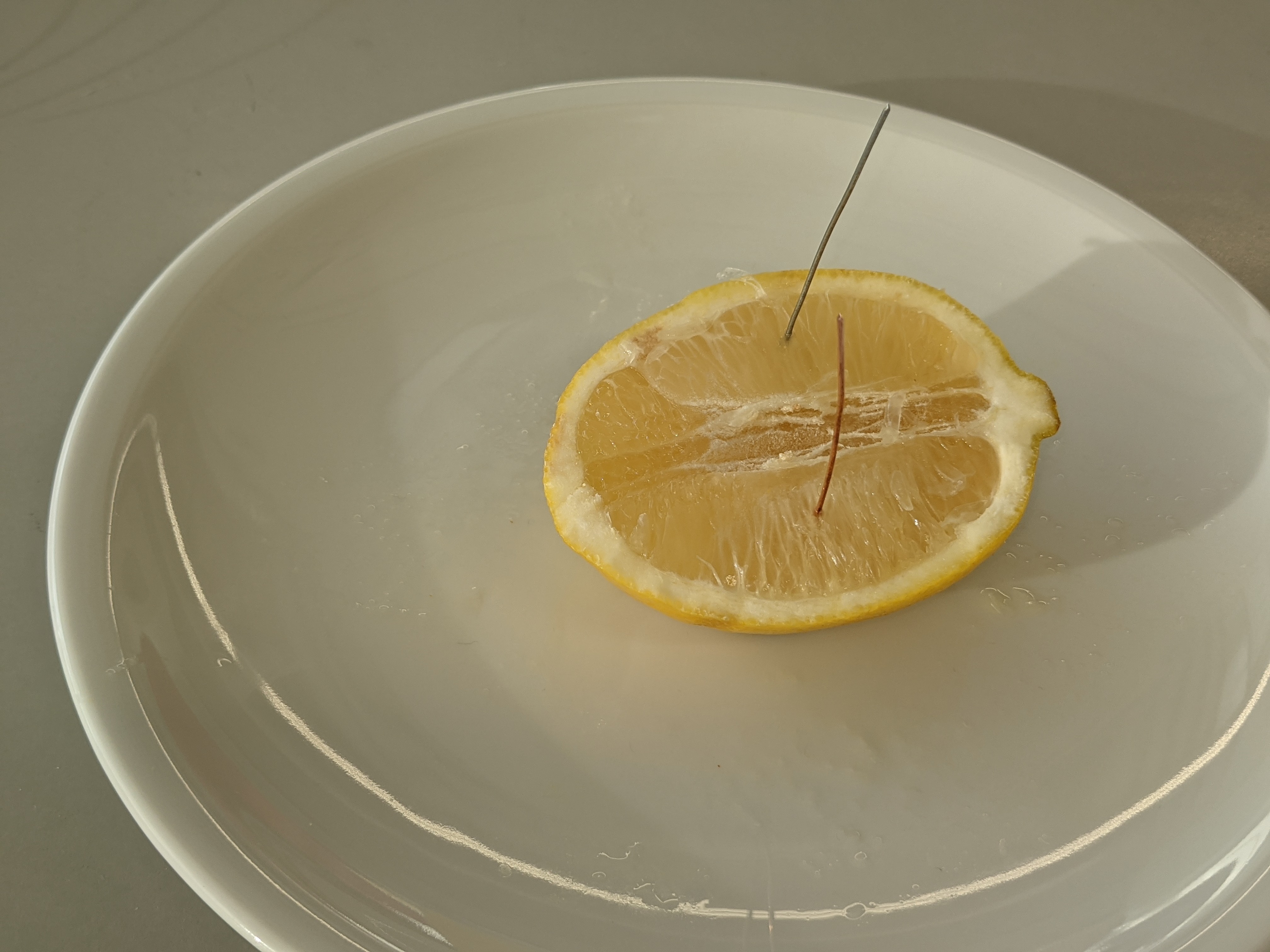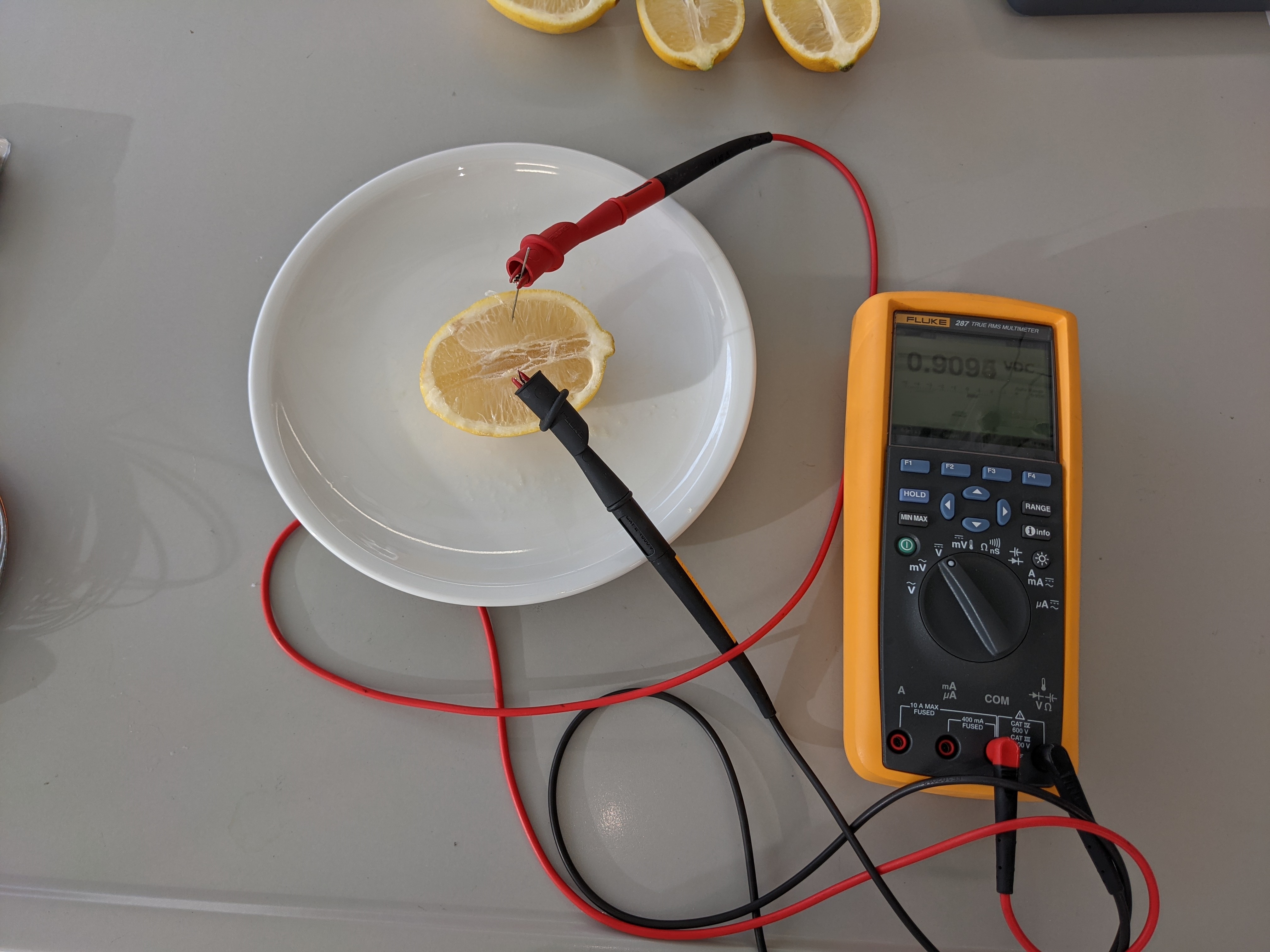On the other side of the lab, you discover a whiteboard that is - strangely - completely blank. Next to it you discover some black light pens. You get the idea that UV light could be necessary to make the writing on the whiteboard visible. Maybe the scientist was afraid that someone would steal his ideas and results? But where could he have hidden a black light lamp? After a long search, you finally discover the UV lamp! However, it doesn't turn on - apparently the batteries are empty... Generate electricity from the lemons you packed for lemonade to power the lamp!
Equipment needed:
- 2 lemons
- Multimeter
- Electrical cables, possibly addtional clamps
- Copper wire (3 pieces)
- Zinc wire or galvanized wire (3 pieces)
- Knife (for cutting the lemons)
Implementation:
Implementation - lemon battery with one lemon half:
- Cut the lemons in half.
- Insert one copper wire and one zinc wire into the lemon half.
-
Connect the wires to the multimeter. Use additional clamps if required. If the multimeter has cables, you can use them as well.
-
Switch on the multimeter and select the appropriate measurement mode.


Task 1:
- Build a lemon battery consisting of one lemon half and measure the voltage with the multimeter.
- Enter the measured value in the table.
Implementation - lemon battery with several halves:
- Put a copper wire and a zinc wire into each lemon half and put the lemon halves next to each other.
- Connect the copper wire of one lemon half with a cable to the zinc wire of the other lemon half.
- Now the electrical circuit must be closed: use the cables and possibly clamps for this.
Tip:
To avoid short circuits, always connect copper and zinc wires (not e. g. a copper wire with a copper wire).
Task 2:
- Use two or three lemon halves connected in series to build a lemon battery with more than one lemon half.
- Measure the voltage using the multimeter and enter the values in the table.
| Arrangements of lemons | Voltage / V |
| 1 half | |
| 2 halves, series connection | |
| 3 halves, series connection |
Puzzle:
Which order is correct?
Solution A (corresponds to code: 2)
U3 halves, in series > U2 halves, in series < U1 half
Solution B (corresponds to code: 9)
U3 halves, in series > U2 halves, in series > U1 half
Solution C (corresponds to code: 1)
U3 halves, in series < U2 halves, in series < U1 half
Solution D (corresponds to code: 3)
U3 halves, in series = U2 halves, in series = U1 half




